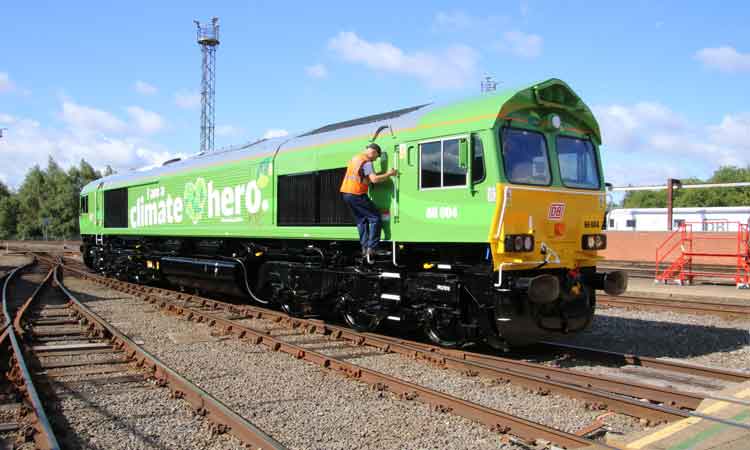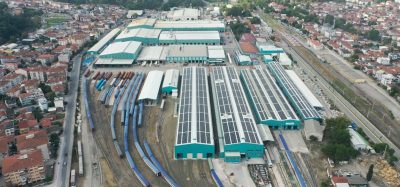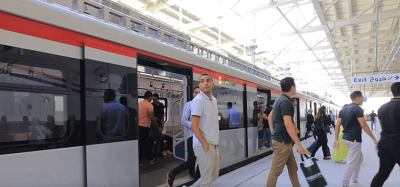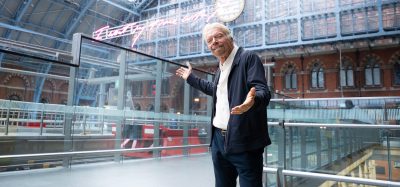The strategy behind alternative fuels for rail freight
Posted: 5 July 2022 | Kathryn Oldale | No comments yet
With climate and environmental protection becoming an increasingly urgent priority for governments around the world, Kathryn Oldale, Head of Strategy, Policy and Communications at DB Cargo (UK) Limited, explains the benefits that alternative fuels can offer the environment and details how DB Cargo UK is approaching the climate challenge that is facing the transport sector.


Climate and environmental protection are amongst the greatest challenges facing the transport and logistics sector. According to the Department for Business, Energy & Industrial Strategy (BEIS), transport is the largest greenhouse gas emitter by sector, as transport alone produces around 27 per cent of the UK’s total emissions. The majority of this (91 per cent) comes from road transport vehicles.
To combat this, DB Cargo UK is calling on the Government to introduce a range of new policies and reforms to accelerate modal shift and increase the volume of goods transported by rail rather than road.
Modal shift
Modal shift for DB Cargo UK means increasing the number of services we run for existing customers, as well as delivering new services on rail that were previously delivered by road. To achieve this, we require government investment, legislative and regulatory changes and increased awareness of the benefits of transporting more freight by rail. With this, we can deliver more regular, reliable and environmentally friendly services for our customers. Modal shift would also provide significant economic benefits; rail freight delivers £2.45 billion of economic benefits to the UK each year in the form of time savings, cost savings, reliability improvements, reduced congestion and safety impacts. Moving goods by rail, even when using diesel locomotives, saves 76 per cent carbon per freight tonne mile, compared to using road.
Join our free webinar: Rail cyber-security in a time of technological and regulatory transformation
Join our expert panel, including speakers from Nokia and Siemens Mobility, to explore the critical convergence of cybersecurity and 5G rail comms.
Date: 3 Dec | Time: 15:00 GMT
Can’t attend live? No worries – register to receive the recording post-event.
The biggest misconception that we have seen since advocating for modal shift is that we are discounting the need for HGVs and LGVs, which is not the case. We will always need road transport to cover the final mile of a journey, but what we are proposing is that the large bulk of the journey is completed by rail. To achieve this, we need to play to our strengths and work together as logistics solutions providers to tie in all aspects of intermodal solutions that meet the needs of our customers and the environment, holistically.
Rather than waiting for these government reforms, DB Cargo UK has made significant investments into adapting its rail fleet to make it more environmentally friendly. Rail is already one of the safest and most eco-friendly means of transport, however rail transport can still improve. Our HVO100 product can power our locomotives with a 100 per cent renewable Hydro-treated Vegetable Oil (HVO) fuel. But what exactly is HVO, and what are its benefits to powering locomotives?
The advantages of HVO HVO is a FAME-free and fossil-free alternative to mineral diesel. It is synthetically made through the hydro-treatment of either vegetable oils or animal fats and is manufactured from 100 per cent renewable raw materials. Because of this, it is also fully biodegradable, and its delivery mileage can be carbon offset. The statistics that we have obtained so far from our HVO100 product are staggering:
- Reduces net greenhouse gas (GHG) carbon dioxide emissions by up to 90 per cent
- Reduces particulate matter emissions by up to 30 per cent
- Reduces hydrocarbon emissions by up to 30 per cent
- Reduces carbon monoxide emissions by up to 25 per cent
- Reduces nitrogen oxide emissions by up to 10 per cent.
These fuels allow us, and our customers, to collectively reduce our carbon footprint and actively contribute to the UK Government’s net zero target for GHG emissions by 2050.
Electric locomotives
Among these decarbonisation strategies, we can also include increasing the number of electrically hauled freight trains, with investments in electrifying a limited number of critical sections of the rail network. Currently, around 10 per cent of rail freight is electrically hauled. Moving goods by rail using electric locomotives saves 90 per cent carbon per freight tonne mile compared to using road. Assuming the national power generation is decarbonised in the future, electric freight trains would produce zero carbon.
Again, like with HVO, there are other benefits to electrification other than carbon emission reduction, including faster acceleration and the ability to maintain higher average speeds, reducing network capacity usage, and improved reliability. However, unlike HVO, which can be considered a ‘quick win’, electrification requires a long-term coherent strategy with the cooperation of the full rail freight sector. This is not to say that there are not any quick wins in electrification by undertaking smaller, key schemes, but we are also committed to developing a long-term plan.
In comparison with HVO, increasing the use of electric traction also comes at a cost premium given the rapidly increasing prices in electricity. Once again, our customers are faced with a question of competing priorities – environmental versus economic sustainability. However, set against a backdrop of alternative fuel and traction sources, one thing remains clear; rail is the quickest, safest and most efficient way to decarbonise the freight sector in the UK. Freight belongs on rail.


Stay Connected with Global Railway Review — Subscribe for Free!
Get exclusive access to the latest rail industry insights from Global Railway Review — all tailored to your interests.
✅ Expert-Led Webinars – Gain insights from global industry leaders
✅ Weekly News & Reports – Rail project updates, thought leadership, and exclusive interviews
✅ Partner Innovations – Discover cutting-edge rail technologies
✅ Print/Digital Magazine – Enjoy two in-depth issues per year, packed with expert content
Choose the updates that matter most to you. Sign up now to stay informed, inspired, and connected — all for free!
Thank you for being part of our community. Let’s keep shaping the future of rail together!
Issue
Related topics
Cargo, Freight & Heavy-Haul, Diesel Locomotives, Electric/Hybrid Rolling Stock, Electrification & Cabling, Rolling Stock Orders/Developments, Sustainability/Decarbonisation







